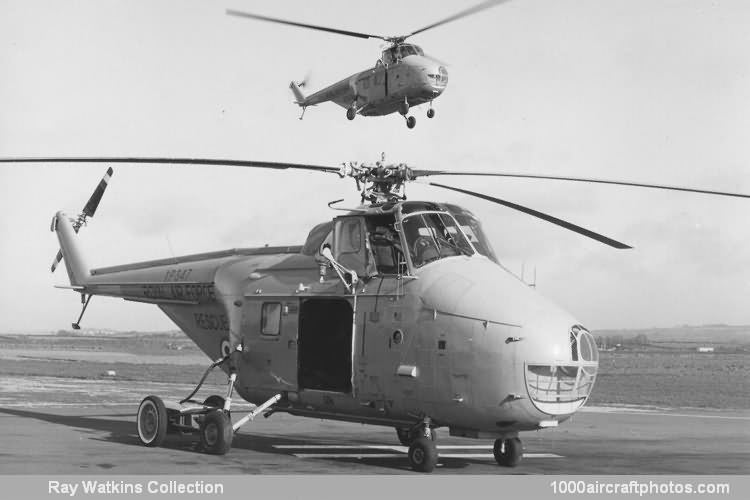08/31/2012. Remarks by Ray Watkins: "As the Dragonfly was entering service with the RN, Westland was already making plans to build a more capable machine and consequently sought an extension of their licensing agreement with Sikorsky to obtain the rights for the S-55. The license was granted on November 15, 1950 and one aircraft was purchased for immediate delivery as a demonstrator.
The problem of 'Anglicizing' the production drawings for the Westland WS.55 Whirlwind Series 1 was made more difficult by the added complexity of the newer design and the fact that many of the substitute British parts were heavier than their US equivalents. The first Whirlwind Series 1 aircraft (registered G-AMJT) had its first hovering test on November 12, 1952, followed by six months of tethered and hovering trials, with the first free flight on August 15, 1953.
The type was produced in three series; the Series 1 powered by the Pratt &Whitney R-1340-40 radial engine, the Series 2 with the Alvis Leonides Major 775 radial engine and the Series 3 with the Bristol Siddeley Gnome H.1000 turboshaft engine. (The designation WS-55 Whirlwind was commonly used for civil versions, the models produced for military service were commonly known as the Whirlwind.)
The pictured XP347 flew for the first time on February 8, 1962, and was delivered to the RAF on March 6, 1962. It served with No. 22 Squadron in the SAR role, in 1977 it was transferred to No. 202 Squadron.
In 1981 the aircraft was declared surplus and was assigned to the Battle Damage Repair Flight at GŁtersloh, Germany. On June 3, 1981 the helicopter was being transferred from Chivenor, UK, to GŁtersloh, with a planned refueling stop at Kokssijde. Whilst air taxiing at Kokssijde the helicopter encountered a failing tail rotor drive and crashed, the crew walked away, although the navigator and winchman both had fractures."
